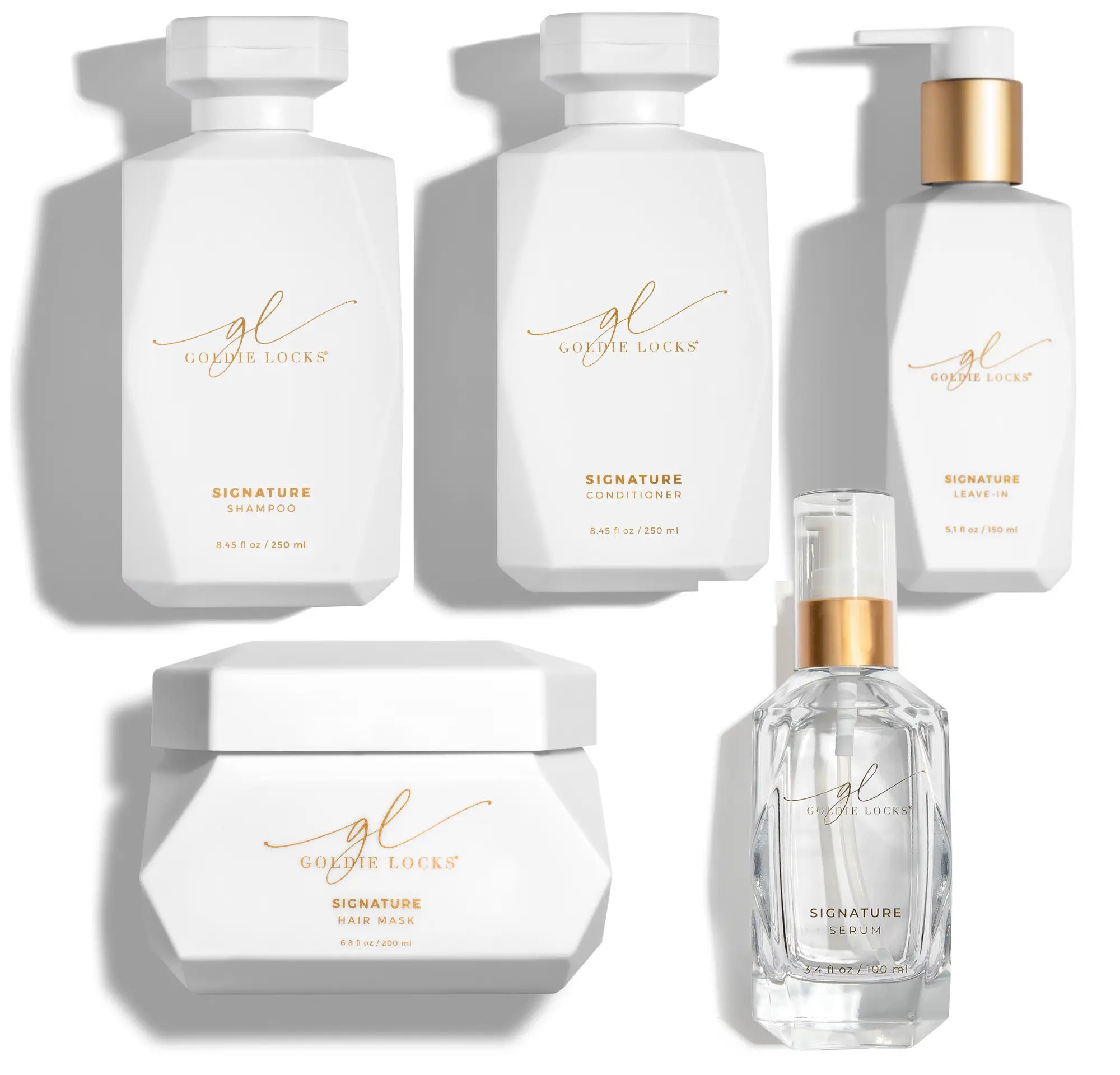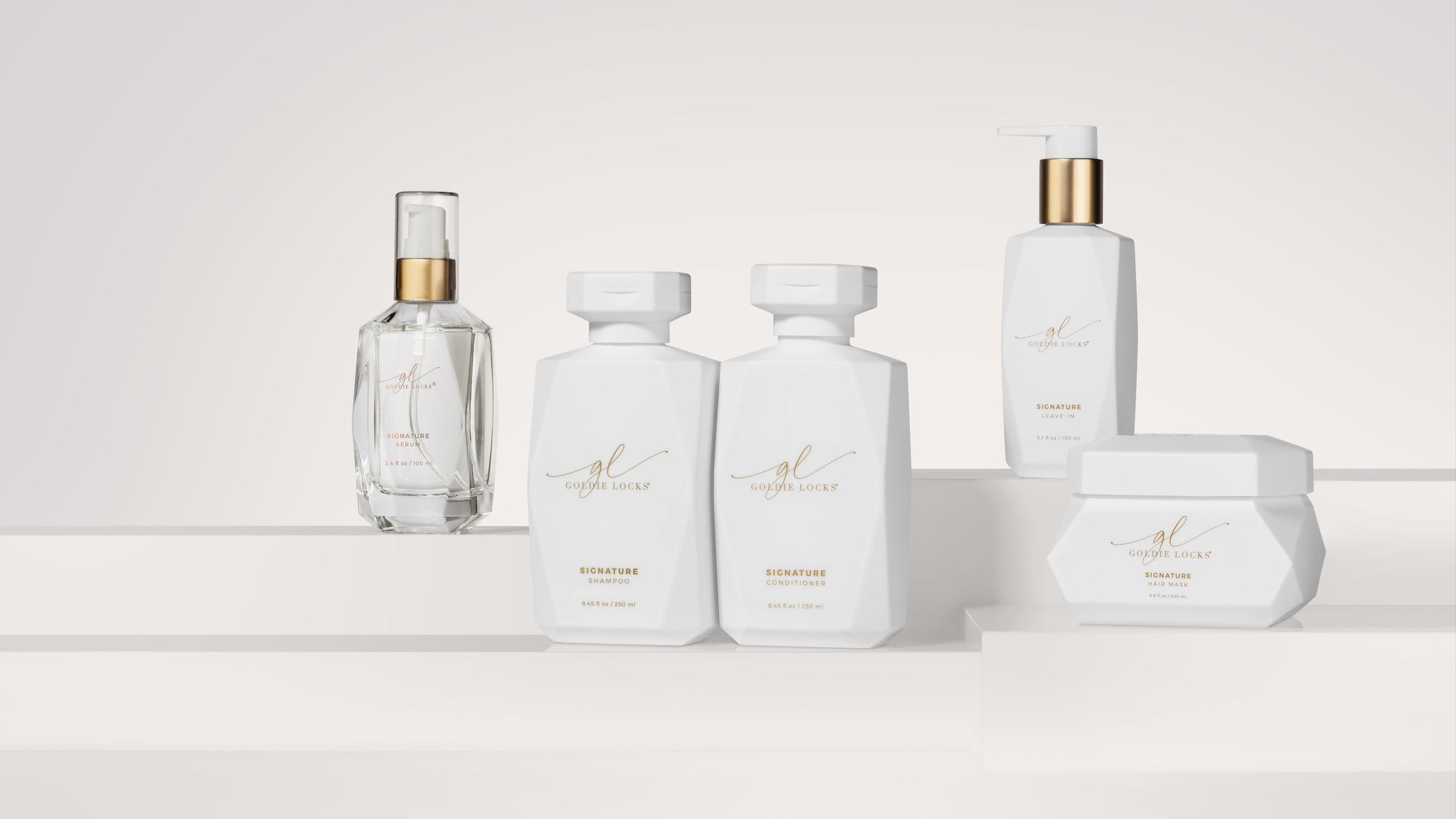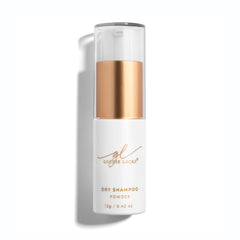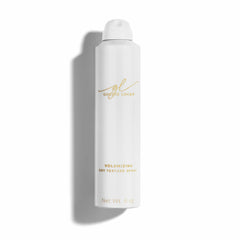For some, a leave-in conditioner is an optional step you take after you freshly shampoo and condition your hair, while others keep it in their bathroom as a must-have to lock in hydration and help brush out the pesky tangles.
We are going to tell you everything you need to know about this unsung hero and explain why and when your hair actually needs this product and how to use leave-in conditioner properly.
Index
- What Is Leave-In Conditioner?
- How To Use Leave-In Conditioner
- When to Use Leave-In Conditioner
- How Often Should You Use Leave-In Conditioner?
- Benefits Of Leave-In Conditioner
- Difference Between Leave-In Conditioner And Conditioner
- Is Leave-In Conditioner Good For All Hair Types?
- Do I Need To Condition My Hair If I Use Leave-In Conditioner?
- Does Leave-In Conditioner Cause Hair Loss?
- Can I Put Leave-In Conditioner On Dry Hair?
- Can I Use Leave-In Conditioner And Hair Oil?
- Can You Use Leave-In Conditioner And Curl Cream?
What Is Leave-In Conditioner?
A leave-in conditioner is exactly that, a conditioner that you leave in your hair.
Unlike a daily rinse away conditioner, a leave-in conditioner is not as concentrated and can easily absorb into your hair strands to protect it from harmful ultraviolet rays, while making the brush out process a lot easier due to the hydrating benefits it provides to your locks.
A leave-in conditioner uses similar ingredients as traditional conditioners do, however, they also vary in concentration allowing it to adapt to all hair types without leaving behind the weight and traces of a traditional conditioner.
We like to think that a leave-in conditioner is similar to a toner for your face after you wash because it rebalances hydration and moisture capabilities that your shower water may have rinsed away, which will help strengthen strands and prevent breakage.
How To Use Leave-In Conditioner

To use a leave-in conditioner:
- Gently towel dry your hair to remove excess water after a bath or shower.
- With your fingers, gently divide your hair in a horseshoe type of section, dividing the top from the bottom.
- Generally you will mist the leave-in, focusing on your mid strands through your ends.
- Drop down the top section and repeat.
- Using a wide tooth comb or brush, gently brush through for even distribution.
- Finish with your styling products then air dry or blow dry to your end result.
When to Use Leave-In Conditioner
Leave-in conditioner is a go-to product that can make a big difference in how your hair looks and feels, but knowing when to use it is key. Here are a few moments when adding it to your routine can really pay off:
After Shampooing
Right after washing your hair is one of the best times to apply leave-in conditioner. With your hair still damp, you can use it to lock in moisture, smooth out frizz, and make detangling a breeze. It’s especially helpful if you're prone to tangles or flyaways, as it helps your hair stay sleek and soft.
Before Heat Styling
Planning to blow dry, straighten, or curl your hair? This is a great time to use leave-in conditioner. Many formulas come with heat-protecting ingredients, giving your hair an extra layer of defense against damage from hot tools. Plus, it helps maintain your hair’s natural shine while keeping it healthy.
To Refresh Second-Day Hair
If you're skipping a wash day, leave-in conditioner can still work wonders. Applying a little to dry hair, especially through the ends, can help smooth out any frizz and add moisture where your hair needs it most. It’s perfect for making your second-day hair look fresh and polished without starting from scratch.
After a Swim
Whether you’ve been in a pool or the ocean, your hair can take a beating from chlorine or saltwater. Applying leave-in conditioner after swimming helps restore hydration and makes detangling easier. Keep some in your beach bag to give your hair a quick refresh after a dip.
Before Bedtime
For those with curly or long hair, a little leave-in conditioner before bed can make a big difference. Apply a light amount to your hair, then braid or loosely tie it up. This helps keep your hair tangle-free and reduces breakage while you sleep. Pairing it with a satin or silk pillowcase can make your hair even smoother in the morning.
In Harsh Climates
If you live in a place with extreme weather—whether it’s super dry or really humid—leave-in conditioner can help. In dry climates, it adds moisture to prevent your hair from getting brittle, while in humid conditions, it helps control frizz and keeps your hair from puffing up.
Using leave-in conditioner at the right times can make your hair routine easier and your hair healthier, no matter your type or texture.
How Often Should You Use Leave-In Conditioner?
Leave-in conditioners work well on freshly cleansed hair after you towel-dry, however for those looking for an extra dose of hydration, they can be used on second and third day hair as well.
Those with wavy or curly hair may see curl activation on day 2 when you apply your leave-in conditioner.
For those who do not embrace or have curly hair, you will use your leave-in after you shampoo and condition your hair, which can vary between every other day to every few days.
Benefits Of Leave-In Conditioner
Leave-in conditioners provide added hydrating and moisture benefits to your strands making it easier to brush or comb through without causing breakage, while bringing protective qualities to shield the hair aging caused by harmful UVs.
All natural hair has a cuticle layer that helps to lock in hydration — this is your first line of defense, however as this cuticle layer gets exposed to harsh chemicals in water, direct UV rays, and daily wear and tear (i.e. blow dryers and chemical processes), your cuticle begins to wear away.
This is where your leave-in thrives and gets to work!
By applying a leave-in it can target weak points on your hair to help support hair's overall strength, and it gives you more reflective shine, too.
Every hair type including hair extensions will benefit from a leave-in conditioner.
Whether you have straight, wavy, curly hair or coils, dehydration is a natural progression that takes place in the environment alone.
When you forgo your leave-in you put your hair in a compromised position that leads to more split ends, breakage, dry, dull, rough and frizz prone hair.
Dehydration is a leading factor in curls losing their bounce and for some hair types to become unmanageable.
Dry Hair
If your hair is dry, it is already telling you that hydration is needed to prevent split ends and breakage.
Hair needs elasticity (the ability to stretch and bounce back without breakage) that is supported by moisture and hydration. When you lack hydration you will notice more pieces of hair on your shirt as you brush through along with unwanted static.
If you feel your hair is a bit “straw” like, it is time to consider a hydrating leave-in conditioner.

Frizzy Hair
Healthy hair doesn’t frizz. It is a sad but nonetheless true story.
While some of us have naturally prone frizzy hair, it is important to understand that the frizz is coming from a weak point in your overall hair growth phase.
This can be reshaped from the inside out (like taking supplements for overall nutrients) by taking an additional step in feeding your hair with proper and topical nutrients that come from the hydrating and moisturizing benefits of a leave-in conditioner.
So those with frizzy hair can get all the benefits and control back with easier to manage styling and seeing an increase in overall shine without the frizz.
Damaged Hair
Damaged hair can come in many forms but it stems from the hair strength and integrity getting hit hard from elements such as the environment, heat and chemical processing.
Essentially, you have been treating your hair as if it was single or in a one way type of relationship. It’s time to give your hair the respect and care it deserves.
While some damage is not reversible it's never too late to make amends and show your hair you care. Otherwise one day, it’ll just give up and continue to break off even when you aren’t ready to let go of it!
Drenching your locks in a hydrating and nutrient-rich leave-in is the best way to revamp damaged hair and start reversing some of the damage that has been done.
Curly Hair
If you have curls or coils, this may not be the first time you’re reading about the wondrous works of a leave-in conditioner.
So let’s talk about how your cuticle and follicle diameter is naturally unique.
Curly hair follicles tend to grow-in oblong versus in a complete circle, which allows the spiral shape to form.
In addition to this, to create the spiral, your cuticle can tend to flip up on that C or S shape it is creating—which is the perfect enemy to your hydration.
By adding an ultra hydrating leave-in conditioner, you are replenishing those weak points throughout your strands and replacing lost moisture and hydration.
What you can expect when you find the perfect amount of hydration are curls and coils springing back into action like they just pounded gatorade after running a 5k!
Bleached Or Color Treated Hair
Anytime we introduce a color, bleach or highlights to our strands we are adding chemicals that change the pH as well. The pH is important to keep in check simply because this is how the cuticle layer protects, retains color and moisture within your hair.
As we alter this through a chemical process it will take some TLC through a leave-in conditioner to get your hair back to prime condition.
It is necessary for you to use a leave-in conditioner based on the simple checklist mentioned in this article as well as keeping your newly colored tress-investment worth it.
If you do not, you will notice your hair color or hair toner will fade quickly, and for those who are lightest blonde, you may notice the sun can start to tweak your platinum into unwanted disoloring tones.
Fine Hair
Fine hair has almost always had a bad experience with leave-in conditioners simply because your hair (even if you have a lot of it) is smaller in diameter, making leave-in conditioners an easily overlooked product to add to your routine.
However, your hair carries the same anatomy of someone with medium to thick hair, your cuticle being one of them. Which means your hair can easily experience dry, static, dull looking and breakage just as much.
If you have fine hair, don’t skip the leave-in, simply look for a fine mist leave-in that can provide you with the benefits without the weight.
Difference Between Leave-In Conditioner And Conditioner

The difference between a daily rinse away conditioner and a leave-in conditioner is the concentration of ingredients as well as how thick the viscosity is.
Your daily rinse away conditioner is made to be a bit thicker and has a higher concentration of ingredients to perform more of a smash and grab type of job, i.e. work with wet hair and quickly change negative ions left by shampoo into positive ions to prevent static, detangle and leave behind softer more manageable hair.
Your leave-in conditioner is made to be lighter and have similar ingredients as daily conditioner, but its form is more dainty.
It is made to stay on the hair all day which is one of the reasons it is not so thick.
This gives your leave-in the ability to absorb on the hair to do the work of a leave-in, while protecting your hair from the likes of UV damage—making your first brush through even easier.
Is Leave-In Conditioner Good For All Hair Types?
Every hair type will reap benefits from using a leave-in conditioner, especially those who tend to get dry or live in a place where the weather fluctuates causing the hair to use more internal hydration to keep the integrity of your hair.
All hair will benefit by balancing hydration and moisture levels, and will see improvement in overall hair health and shine from the nutrient benefits leave-in conditioners provide.
Do I Need To Condition My Hair If I Use Leave-In Conditioner?
You won’t want to skip your daily rinse out conditioner even if you are using a leave-in simply because your daily conditioner is poised to address negative ions from your shampoo.
The concentration of a quick hit of your conditioner is the first step followed by a lightweight leave-in conditioner.
Does Leave-In Conditioner Cause Hair Loss?
A leave-in conditioner will not cause hair loss.
Keep in mind, your focus is to apply this on mid-strands through ends which has no control over what happens underneath your scalp.
If you have skipped your leave-in in fear of hair loss, we are here to break that myth and let you know, it is ok to use this product.
Can I Put Leave-In Conditioner On Dry Hair?
A leave-in conditioner is safe to apply on dry hair, especially those who have the characteristics of dry (dehydrated) hair and those that are blessed with texture.
Because a leave-in is lightweight with an emphasis of hydration and moisture, it will not harm your hair to apply or reapply on dry (non-wet) hair.
Can I Use Leave-In Conditioner And Hair Oil?
A leave-in conditioner is made to prep and prime the hair therefore you will start your styling regime with your leave-in and then apply a hair oil or hair serum afterwards.
You may rest well knowing you are providing even more protection and hair strength by using both products.
Can You Use Leave-In Conditioner And Curl Cream?
Your leave-in conditioner is the perfect foundation product to use prior to a curl cream because it allows for a more defined and even saturation of your curl cream prior to use.
In fact those with curly hair will see an overall healthier bounce of your curls when using a leave-in conditioner first.


























